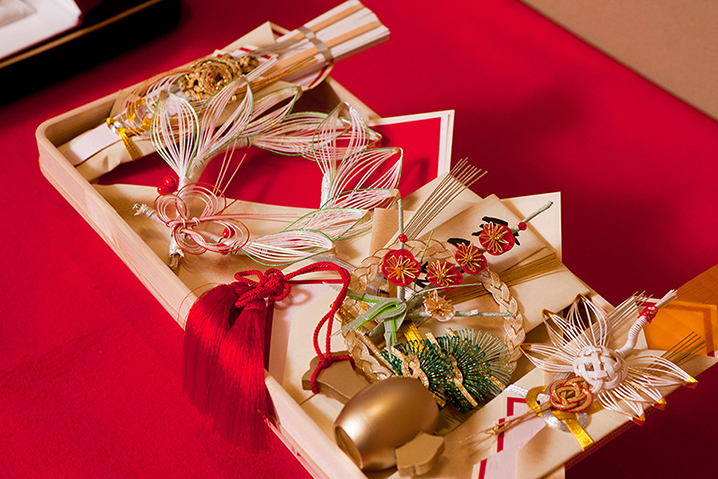While Japanese weddings are widely celebrated, few outsiders know about yuino (結納), the formal engagement ceremony that predates the wedding itself. Rooted in Japan’s aristocratic past, this ritual transforms a personal promise into a sacred bond between families. Unlike Western engagements, which focus on rings and romance, yuino is a solemn exchange of symbolic gifts, contracts, and blessings—a tradition still practiced quietly in some households today.

Origins: A Ceremony of Nobles and Samurai
Yuino dates back to the Heian period (794–1185), when arranged marriages among nobility required a formal agreement to secure alliances. By the Edo period (1603–1868), the practice spread to wealthy merchants and samurai families. Today, it survives mostly in Kansai (Kyoto, Osaka) and Okinawa, though urban couples often opt for simplified versions or skip it entirely.
Why it matters:
– A family affair – The union is not just between two people but two households.
– Symbolism over sentiment – Every gift and gesture carries deep meaning, from longevity to prosperity.
The Ritual: Gifts, Contracts, and Unspoken Rules
The Exchange of Yuino Gifts
Families present several symbolic items, each carefully selected for their auspicious meanings. The most essential gift is noshi, originally dried abalone symbolizing longevity, though today decorative paper versions are often used instead. Another key item is katsuobushi, dried bonito flakes representing the groom’s future strength, which modern couples might substitute with small symbolic packages. The suehiro, a white folding fan, signifies the family’s expanding happiness and is one of the few gifts still used in its original functional form.
The Written Pact
The ceremony includes two important documents. First, the mokuroku, a formal inventory of all gifts presented, is read aloud by the groom’s family. Then the bride’s family signs the ukesho, a receipt that formally confirms their acceptance of the engagement and the gifts.
Strict Etiquette
Participants must follow precise rules. Men wear montsuki haori hakama, the most formal kimono attire, while women dress in either black furisode or tomesode. Certain actions are strictly forbidden, like rearranging gifts once placed or pouring tea for others, as these gestures symbolically represent broken ties.
Modern Adaptations: Tradition in Transition
Today, yuino exists in three forms:
1. Full traditional yuino – Practiced by conservative families.
2. Simplified yuino – Exchanging rings and a few symbolic gifts.
3. No yuino – Skipped entirely, especially among young couples.
Notable Trends:
– Hotels and ryokan offer “yuino packages” with guided ceremonies.
– Okinawa’s version includes awamori liquor and bingata-dyed fabrics.
Why Yuino Remains Fascinating
– A living relic – One of Japan’s oldest surviving betrothal customs.
– Family over individualism – Reflects Japan’s collectivist values.
– Hidden cultural depth – Rarely experienced by tourists, making it a unique discovery.
Yuino is more than a pre-wedding ritual—it’s a window into Japan’s reverence for tradition, family honor, and unspoken bonds. For those seeking to understand Japan beyond cherry blossoms and sushi, this quiet ceremony reveals a deeper layer of cultural meaning.










